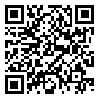Volume 24, Issue 2 (2020)
CLR 2020, 24(2): 87-112 |
Back to browse issues page
Download citation:
BibTeX | RIS | EndNote | Medlars | ProCite | Reference Manager | RefWorks
Send citation to:



BibTeX | RIS | EndNote | Medlars | ProCite | Reference Manager | RefWorks
Send citation to:
Kabiri Shahabad H. Study of Mass Tort in American law؛Reflection on the Iranian Legal System. CLR 2020; 24 (2) :87-112
URL: http://clr.modares.ac.ir/article-20-41263-en.html
URL: http://clr.modares.ac.ir/article-20-41263-en.html
Assistant professor of Private law, Department of Law and Political Science, Yazd University, Yazd, Iran , h.kabiri@yazd.ac.ir
Abstract: (2254 Views)
Sometimes numerous persons are harmed by harmful act or acts, such as exposure to toxic substances or by a manufacturer using harmful substances in his products. If the harmed persons want to file a claim for damages and be investigated individually, the result of the Individual litigation is that they must prove harmful act, loss-making and causality between the two, and this sometimes leads to a reluctance to file a claim. Also The speed of investigate has slowed and burden costs to the judiciary. A lawsuit has been filed against such cases as "Mass Tort" in the United States. This lawsuit where judicial authorities acknowledge the need for special judicial management and resolve it by choosing the appropriate approach. This article examines this lawsuit and explains its dimensions in the United States of American’s law and then, has been examined the status of dealing with these lawsuits in the Iranian legal system. As a result, in the US judicial system, judicial authorities choose from a variety of approaches and resolve these lawsuits, and there is no solution in the Iranian legal system to deal with these lawsuits, whether class actions or consolidation, and development of appropriate solutions must be considered by the legislator.
Article Type: Original Research |
Subject:
Comparative Law
Received: 2020/03/7 | Accepted: 2020/08/22 | Published: 2020/09/20
Received: 2020/03/7 | Accepted: 2020/08/22 | Published: 2020/09/20
Send email to the article author
| Rights and permissions | |
 |
This work is licensed under a Creative Commons Attribution-NonCommercial 4.0 International License. |







